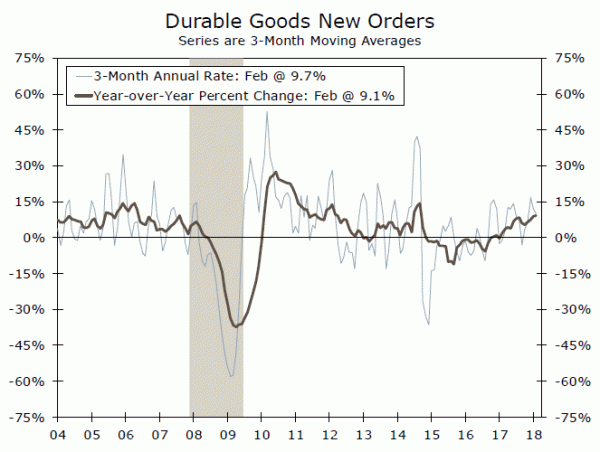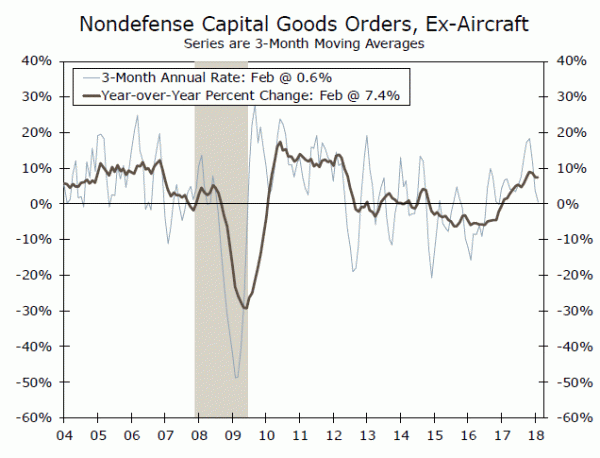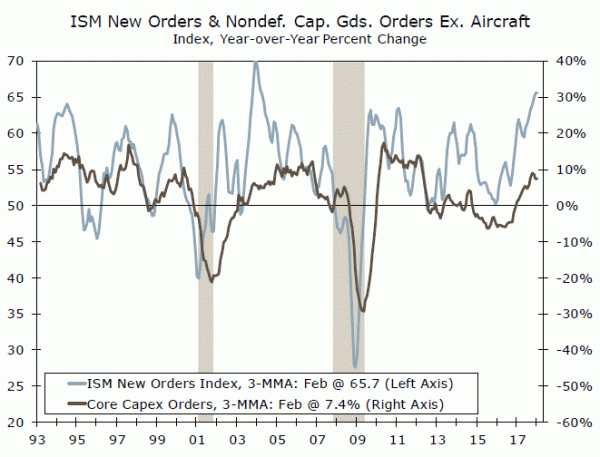Durables orders rose 3.1 percent in February. After declining the past two months, core orders increased well above expectations and rose 1.8 percent. Even with the rebound, business spending looks to have slowed in Q1.
Core Capital Goods Orders on the Mend
Capital spending and output measures were notably weak in December and January, which has raised some doubts about the outlook for business spending despite all the euphoria surrounding recent tax changes. The state of business spending, however, looks much stronger following the February durable goods report.
Durable goods orders rose 3.1 percent in February, nearly double consensus expectations. While it is not unusual for total durable goods orders to miss so wide off the mark given notoriously large and volatile components like aircraft and defense items, February’s miss can in large part be traced to a surprisingly strong increase in core capital goods orders. After two consecutive months of declines, expectations were for capital goods ex-aircraft and defense to rebound 0.9 percent, but orders bested even those high expectations and rose 1.8 percent.
The bounce-back in core orders parallels a rebound in manufacturing output as reported by the February industrial production report. In the January report, manufacturing production was reported to have stalled for two straight months. Manufacturing output jumped 1.2 percent in February, however, lending credence that today’s gain in core capex orders has some weight behind it and is more than noise.
With two months of data in for Q1, we are able to get a better sense of equipment spending for the current quarter. Nondefense capital goods shipments, which feed into the GDP estimates for equipment spending, rose 1.2 percent in February. Currently for Q1, shipments are up at a 4.7 percent annualized rate, compared to 6.8 percent in Q4.
Hard and Soft Data Take a Step toward Convergence
For months now, we have written that the “hard” data on spending must converge with the sky-high readings of “soft” survey data. Business confidence, as measured by the NFIB Small Business Optimism index, has been at multi-decade highs, while the ISM manufacturing index sits at a 14-year high. Today’s report helps to narrow the gap, but the recent trend in orders still looks soft relative to the breakneck pace registered last fall. With a decline the previous two months, core orders are increasing at just a 0.6 percent annualized pace the past three months, which is down from an 18 percent clip as recently as November.
All told, even with today’s solid rebound in core orders, it is unlikely we will see a third straight quarter of double-digit increases in equipment spending. We currently expect growth in real equipment spending to moderate to about a 7 percent pace in first quarter, which still looks fairly solid in our view coming on the heels of the tremendous strength of the second half of last year.














